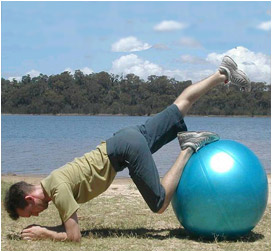We now know the importance of remaining active. At Shirley Rd Chiropractic we often say “Use It, or Lose It!”
Studies have shown that complete rest leads to demineralisation and a 3% loss of muscle strength per day.1 Because of this, prolonged bed rest may be the most harmful treatment for back pain ever devised. Bed rest has been shown to produce 1 – 1.5% of muscle mass loss per day and 15% loss of aerobic capacity in 10 days.2
A 30 year follow up study of 5 healthy 20 year old men that underwent 20 days of bedrest in 1966 revealed the remarkable finding that the 3 weeks of bedrest in 1966 caused a more profound deterioration in cardiovascular and physical work capacity than did 30 years of aging!3
A study of 1,652 fire fighters over 3 years, where they had been divided into 3 fitness groups, found that physical fitness and conditioning are preventive of back injuries. In the study those who developed back injuries were:4
- Least fit group – 7.1%
- Mid-fit group – 3.2%
- Most fit group – 0.8%
We will often talk about “Core Stability” and “Trunk Muscle Strength” at Shirley Rd Chiropractic. We do this for good reason. In 1999, it was convincingly discovered that decreased muscle tone and strength in the trunk and deeper muscles of the spine are a major risk factor of low back pain.5,6 It was also found that deep back muscle wasting was present in 80% of patients with low back pain.7 Deficient core stability may explain low back pain recurrence with minimal or no predisposing incidents.8
“Your back is only as strong as your front. And it is only as strong as the connection between the two.” – Brent Gordon
The important muscles that are involved with our core stability are the multifidus (deep extending muscles of the spine) and the transversus abdominus (middle layer of muscle connecting the front and back muscles). It has been found that in patients with chronic low back pain that they have fatty infiltration in their multifidi.9 We know that the ligaments of the spine only provide stability at the extreme end range of movement. It is the middle and deeper layer muscles which are responsible for the majority of the stabilisation required to keep the back functioning properly.10 Therefore the recovery process should involve restoring strength to these muscles.
Without motion the disc deteriorates, joints stiffen, ligaments shorten, bone density decreases and muscles become deconditioned. – Nelson, 199911


Consider your trunk as a column, which is very strong under compressional load. If you lose control of the deep layer muscles the column bulges and loses strength. It is for this reason many people injure their spine.
These muscles, ligaments and connective tissue and even bones need to be challenged frequently if they are to remain in tip top condition. Remember, “Use It, Or Lose It!”




References
- Waddell, G. (1987) Spine 12: 632-644
- Bigos (1994) Acute low back problems in adults. Clinical practice guidelines.
- McGuire et al. (2001) Circulation 104: 1350-1357.
- Cady (1979) J. Occupational Medicine 21: 269-272.
- Lee, J-H. et al. (1999) Spine 24: 54-57.
- Lee, J-H. et al. (1999) Trunk muscle imbalance as a risk factor of the incidence of low back pain: A 5 year prospective study. JNMS 7: 97-101.
- Kader et al. (2000) Correlation between the MRI changes in the lumbar multifidus and leg pain. Clinical Radiology 55: 145-149.
- Hides, J.A. (2001) Long-term effects of specific stabilizing exercises for first-episode low back pain. Spine 26: E243-248.
- Leggett, S.M., Mooney, V.M. et al. (1999) Restorative exercise for clinical low back pain. Spine 24: 889-898.
- Jemmett, R. (2001) Spinal Stabilisation. The New Science of Back Pain. Halifax, Canada, RMJ Fitness & Rehabilitation Consultants.
- Nelson, B.W., et al. (1999) Arch. Of Phys. Med. Rehabil. 80: 20-25.
